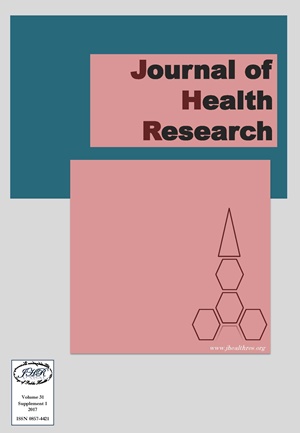Effect of Temperatures on the Parasitaemia of Plasmodium falciparum in vitro
Keywords:
Plasmodium falciparum, Temperature, Culture, SynchronizationAbstract
Background: Plasmodium falciparum is the most important human malaria parasite. To further improve the cultivation and related techniques of this parasite, effect of temperatures on the
P. falciparum cultivation, in vitro, was studied. The total, ring and non-ring stages of synchronized culture, at different temperatures, were determined to evaluate their effects on the growth and development of the parasites.
Methods: Cultures of P. falciparum were exposed to different temperatures, 4, 34, 37 and 40 °C. The effect of temperature was determined as percent parasitaemia of ring and non-ring stage. K1CB1, T9/94RC17 and 3D7 clones were used in this experiment.
Results: The growth pattern of all 34 °C cultures were similar to control (37 °C) while the parasites were killed after 72 hours exposure at 4 and 40 °C. In 4 °C culture, the major population was mainly in ring stage. On the contrary, only the non-ring stage can be detected after 48 hours incubation at 40 °C.
Conclusion: At 4, 34 and 40 °C, the P. falciparum growth was lowered, compared with the control group at 37 °C. All parasites cannot be detected after 48 or 72 hours incubation at 4 and 40 °C. In 4 °C culture, most detected parasites were ring stage while in 40 °C, most detected parasites were non-ring stage. Stage preferences by different temperatures may applicable for synchronization technique improvement.







